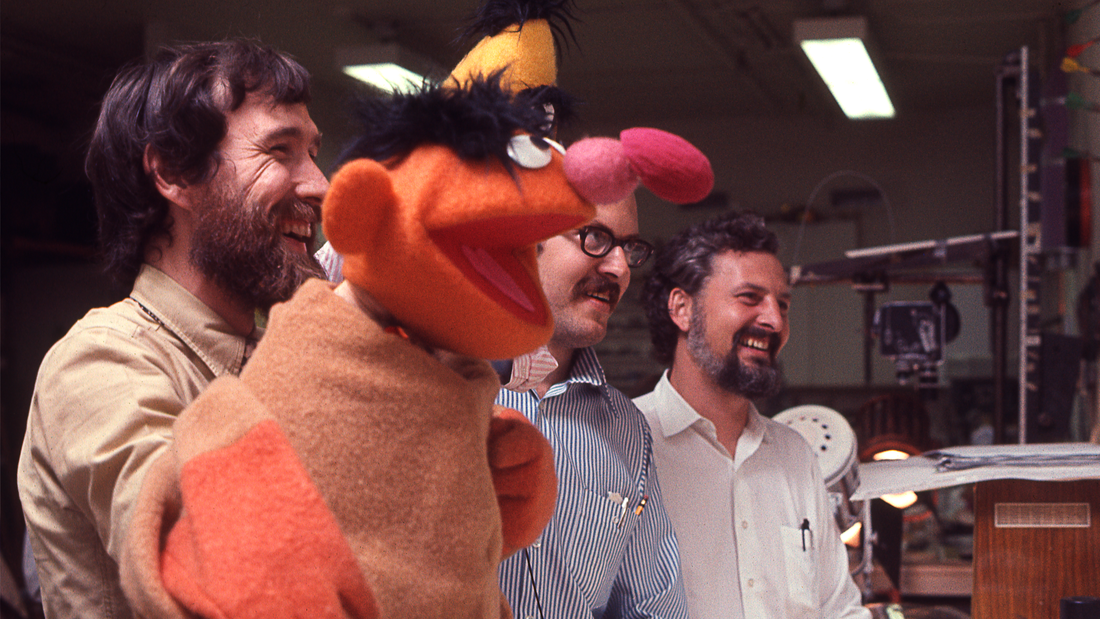|
Street Gang: How We Got To Sesame Street (2021) Marilyn Agrelo’s delightful documentary chronicles the origins and meteoric rise of a revolutionary program that changed television. In the spirit of the show, Street Gang: How We Got To Sesame Street is a lesson on creative collaboration and the influential power of television. In the late 60s, during the height of commercial television, children were responding to catchy advertisements with jingles. Television was their reality; they absorbed and retained what they heard on screen, which consisted primarily of product placements. So why not leverage the medium for social good? What would television become if it loved people instead of sold to them? Street Gang answers the questions of who paved the way to open Sesame. Agrelo’s documentary is an exceptional Sesame Street origin story that spans a group of creatives who came together to help inner-city children with education.
Incredibly ambitious for its time, Sesame Street hit the crest of a wave for change. The intentionality behind this show, in wanting to bring real conversations into people’s homes, is felt deeply. Agrelo brings attention to some of the people who were influential in shaping Sesame Street, traveling back in time to how the late 60s/early 70s climate helped inform the urge for more education. Hearing the perspectives of insiders shines a light on how their industry began facing up to the responsibility of TV as a powerful medium. American television producer Joan Ganz Cooney recognized the need for education as the centerpiece in shows for children. After traveling the United States and Canada interviewing experts in child development, she reported her findings in a document called ‘The Potential Uses of Television in Preschool Education’. This study became the blueprint for what Sesame Street would become. She co-founded Children’s Television Workshop (now Sesame Workshop) specifically to oversee the show’s production. She opened the door to a room full of creatives, some of whom did not get the recognition they deserved. One of the earliest voices of Sesame Street was television writer/producer Jon Stone, who was credited as the creative force of the show. Through his own words, as well as those of his colleagues and family members, his all-consuming dedication was in the service of making well-written material with sophisticated humour. The intention was not only to educate children but also appeal to adults, keeping in mind that families would ideally be watching the program together. Everything from the music to the muppets were made on a level of sophistication that speaks directly to people, not down at them. Stone’s name was an undeniable key to the show’s success, and he tended to be overshadowed in retrospect by a more high profile contributor. The general public’s assumption was that Jim Henson started Sesame Street, largely because his creation of the Muppets was so closely tied to the fabric of the program. The documentary addresses this without delving into too much detail. More focus is on establishing the contributions both men made to the show, and how well their ideas meshed together to create something special. Henson’s dark sense of humour (as seen in the Muppet origins on late-night television, such as the Wilkins Coffee commercials) clicked with the intentionality of the program to engage in mature conversations through entertainment. One of the benefits of focusing on the first 20 years of a long-lasting (and still-current) show is that the filmmakers can go deeper into its foundation. Agrelo pulls back the curtain and includes rare behind-the-scenes footage from the set. It’s a treat to watch a group of creatives bounce ideas off one another in the writers’ room and collaborate with a shared passion for making something meaningful. So much of what is initially synonymous with Sesame Street involves the Muppets, the iconic steps, and the overall vibrant musical experience. But behind the curtain, the show is a strong reflection of how the world felt at the time of its origins. So much of the show’s development is an explanation for why the creators needed to address important topics. There is an authenticity and a mirroring of reality that audiences recognized in the show, leading to its groundbreaking success. Real conversations were happening on screen, not just amongst the creators but to the people watching. Following the death of Will Lee, who played Mr. Hooper on the show, Jon Stone directed a powerful segment where Big Bird learns of Mr. Hooper’s death. The concept of educating children on death and mourning was one of the most prominent examples of why this show was groundbreaking for its time. Including this segment also gives the documentary a strong emotional core. As a child who grew up watching Sesame Street, this documentary immediately brings back a wave of nostalgia. The sense of familiarity, whether it be through the theme song or the iconic muppet characters, radiates on screen from beginning to end. While great focus is brought to the many creatives who made Sesame Street a reality, sometimes the documentary feels like a free-falling observation. Plenty of conversations are made around where the vision and style come from; there’s a lot of storytelling through floating heads, which mostly services a first-hand account of the inspirational creatives behind the show. There is a missed opportunity in not delving more into the aftermath of why this show began in the first place: to help children with education and provide access to inner-city children, specifically Black children who were not provided with equal educational resources. The response to Sesame Street and the growth of its audience is an aspect that flies under the radar. The show saw Woodstock-level crowds during major city tours. In addition to the creatives who paved the way, those who found the way to Sesame Street and felt its impact carry a perspective that the documentary could have spent a little more time with. In addition, long-time members of the cast including Sonia Manzano (as Maria Rodriguez) and Roscoe Orman (as Gordon Robinson) contributed so much to the show and could've been given more focus. At the focus of this documentary is a tight-knit, collaborative group of creatives who brought ambition to fruition. Street Gang: How We Got To Sesame Street further instills just how revolutionary this show was in terms of combining entertainment and education, while maintaining education as its main focus. The documentary is a resonating reminder of how influential and formative the media is, especially with children for whom television was their reality. Marilyn Agrelo brings an appreciative, reflective, and insightful approach to this subject matter. Rather than span over decades of the show and land on all the greatest hits, Agrelo structures the narrative around the early days. Naturally a more vulnerable time in the sense that producers took a risk on something that had not been done before. Above all, Street Gang resonates as a heartwarming origin story and an inspiring exploration of people who wanted to make a difference. Street Gang: How We Got To Sesame Street is available May 7 on Apple, Google Play, and VOD.
0 Comments
Leave a Reply. |
Archives
June 2024
Categories |


 RSS Feed
RSS Feed